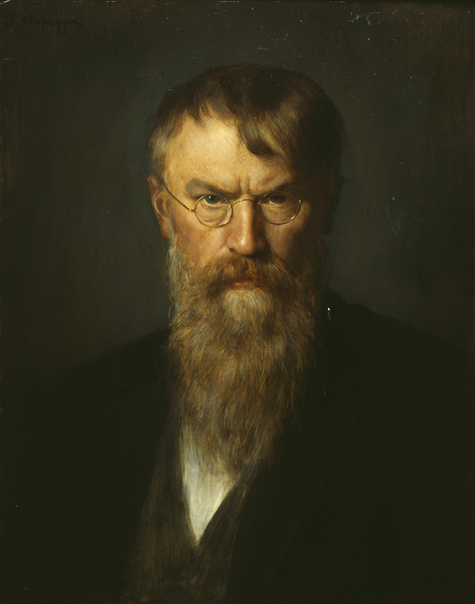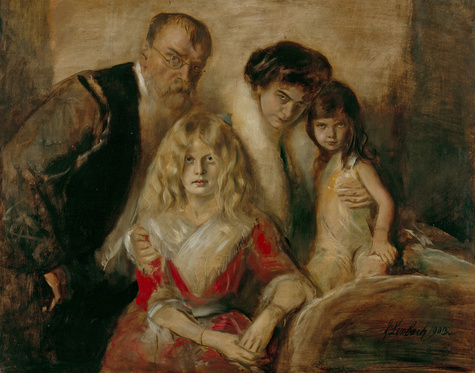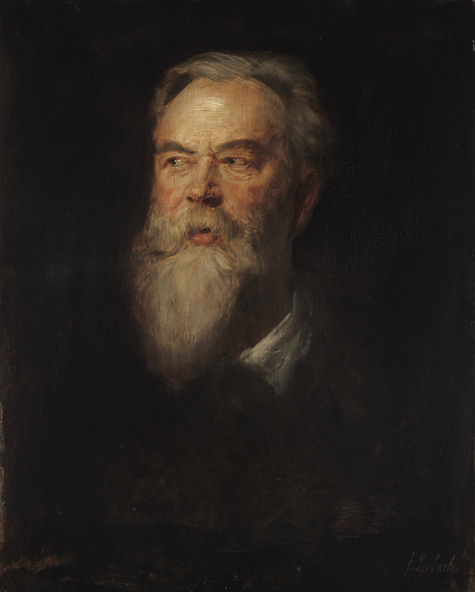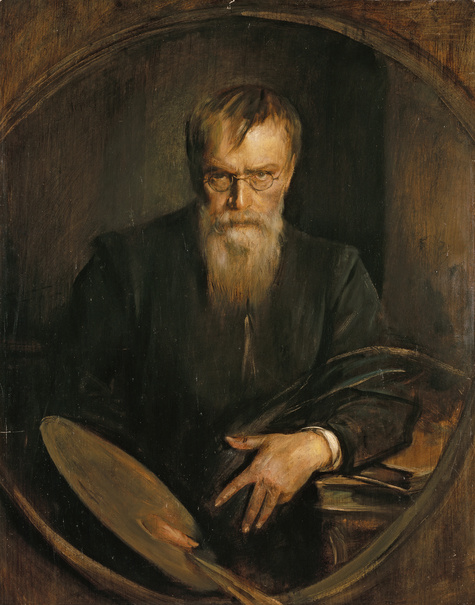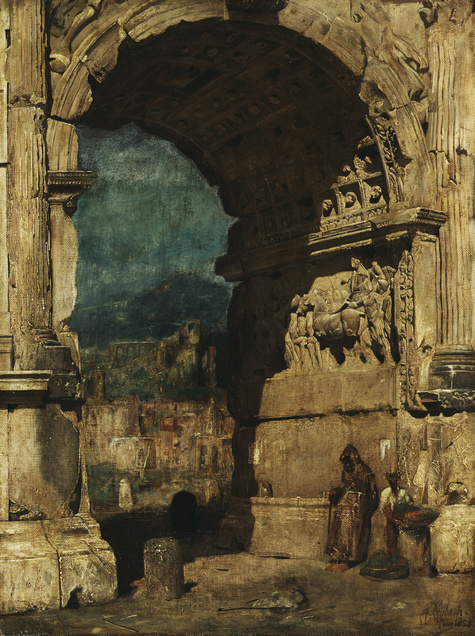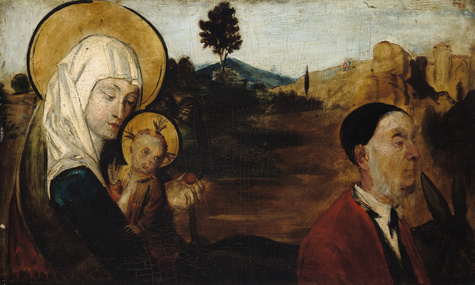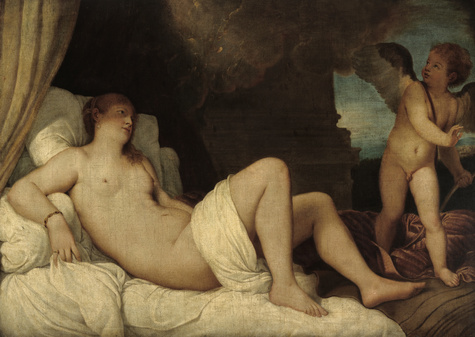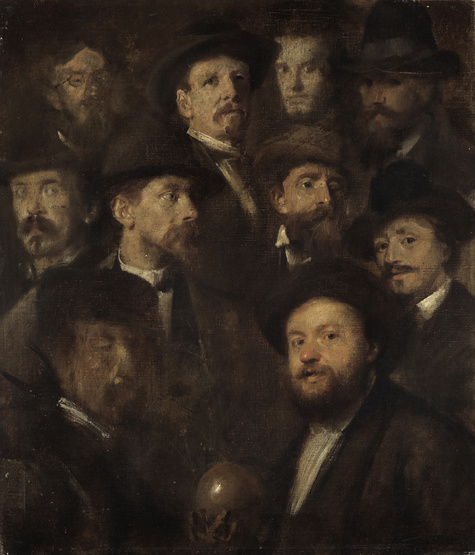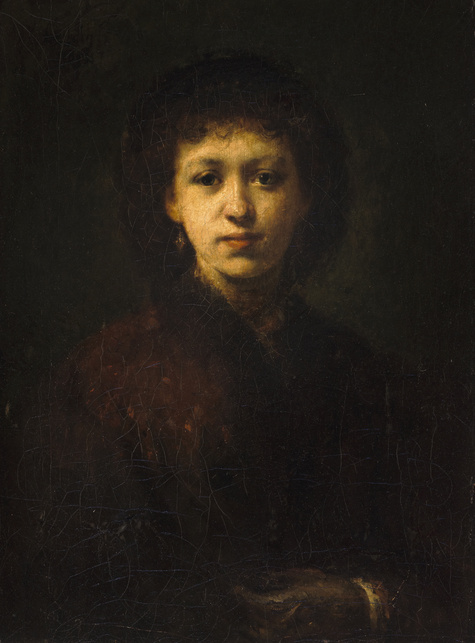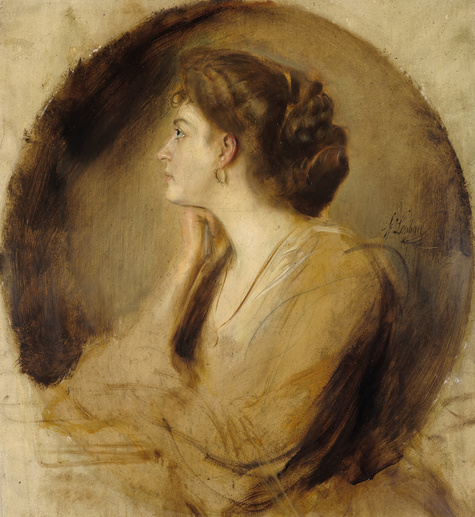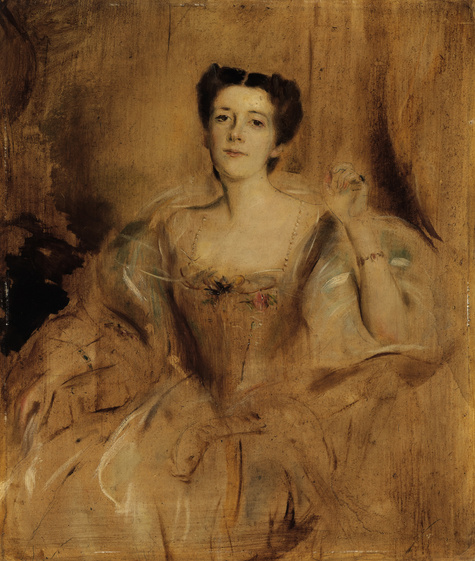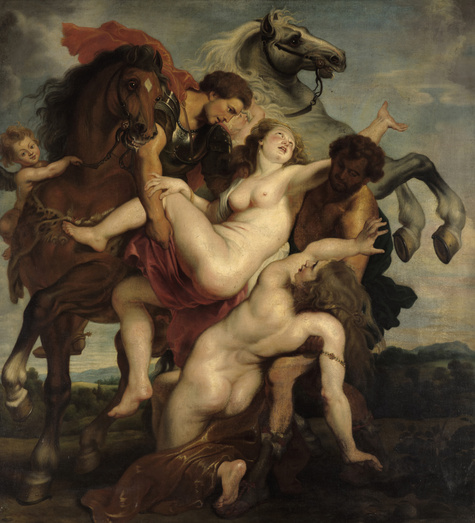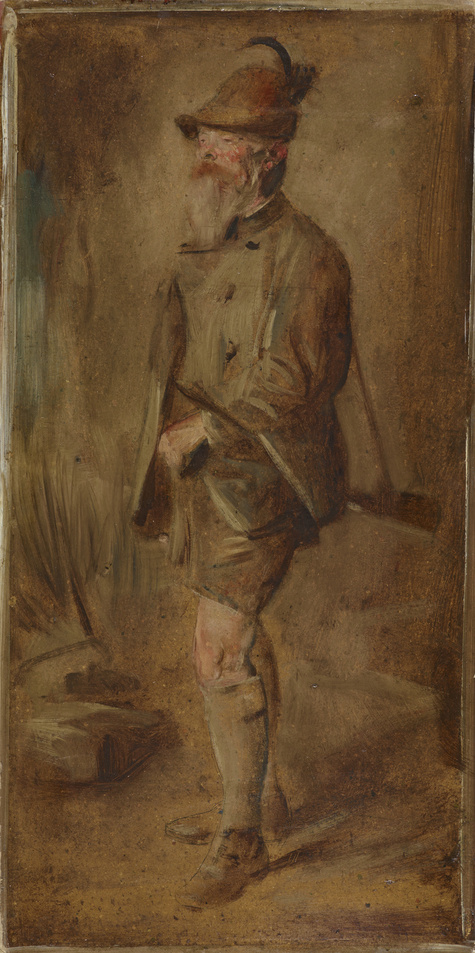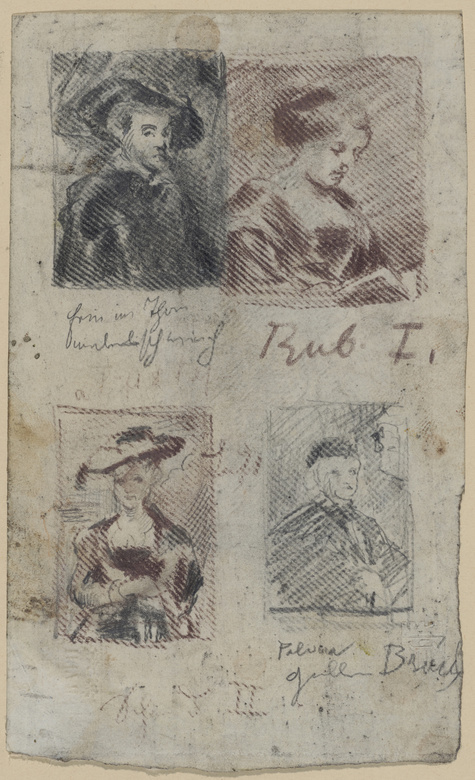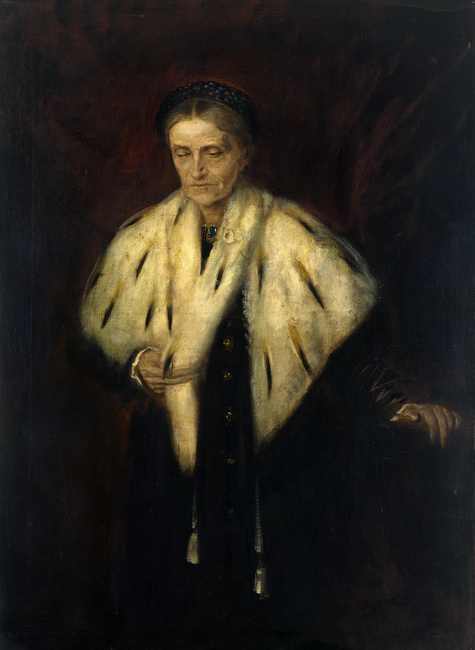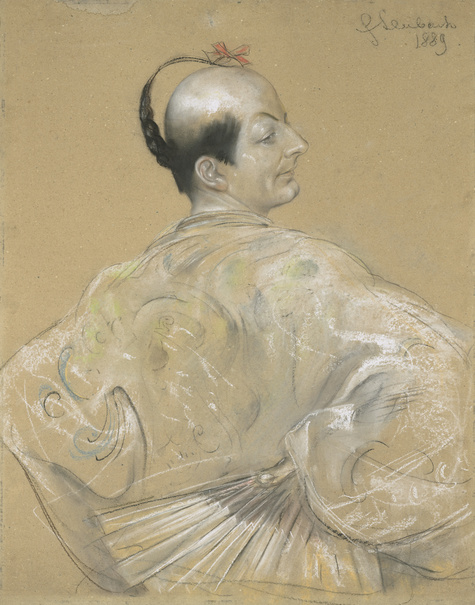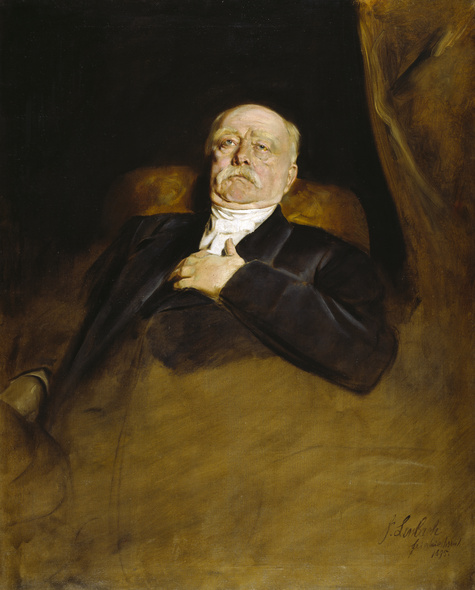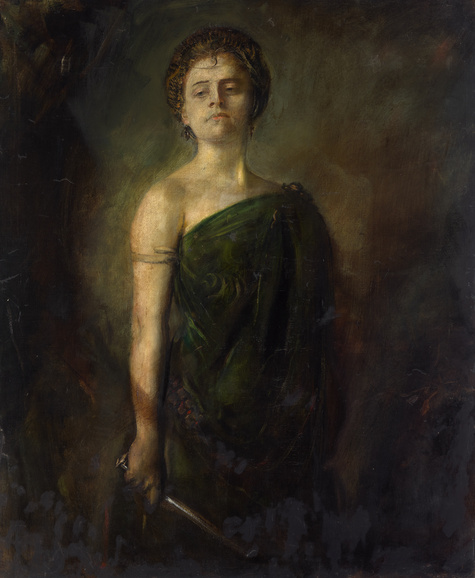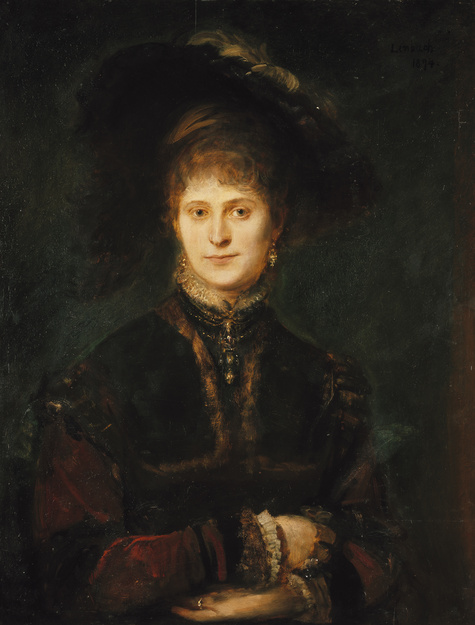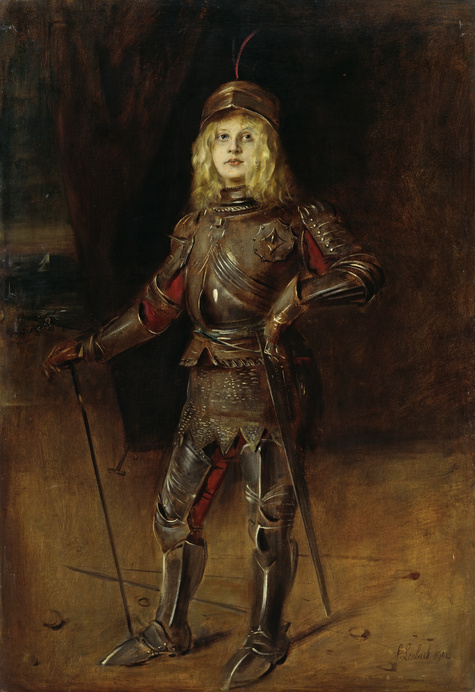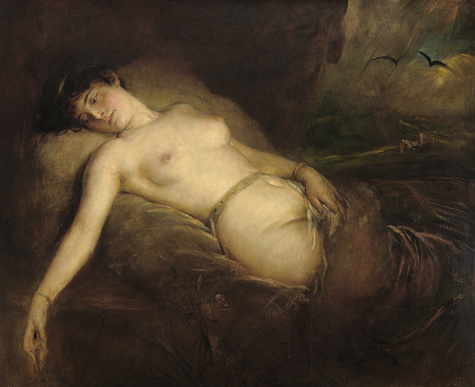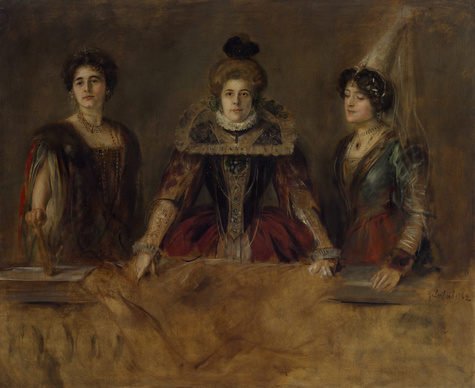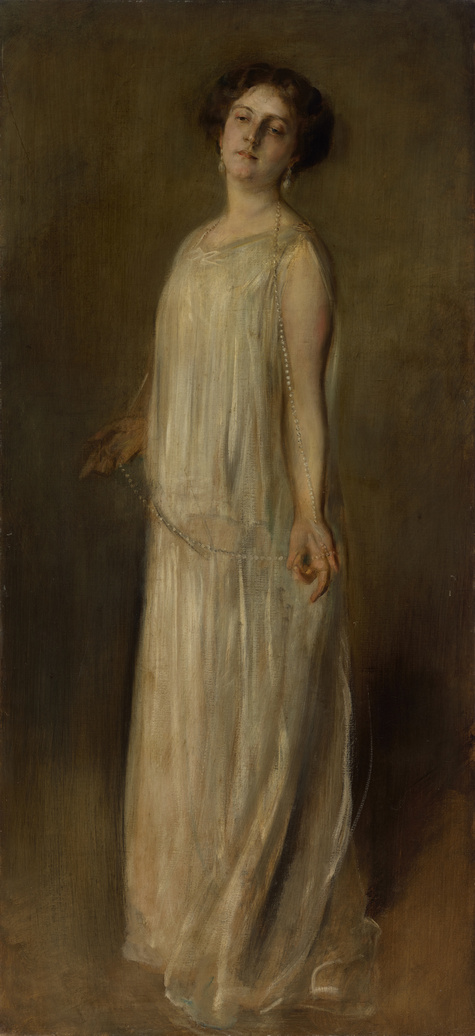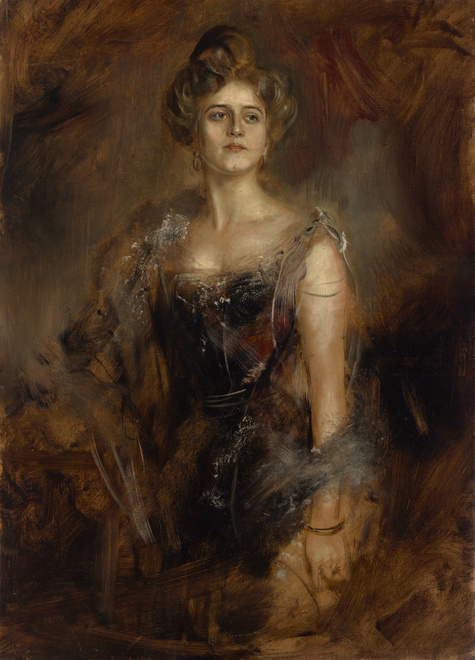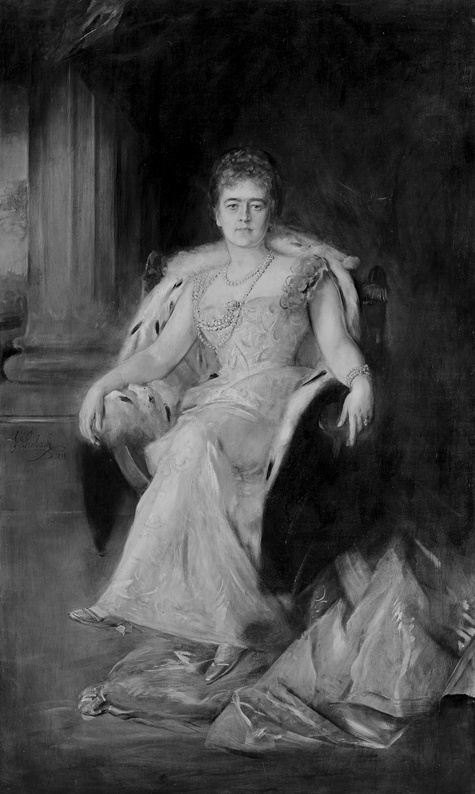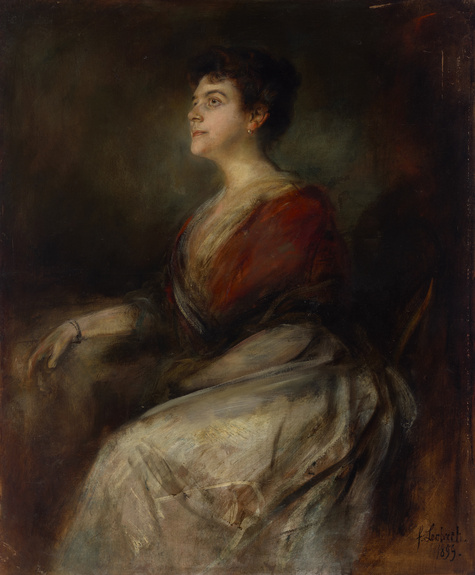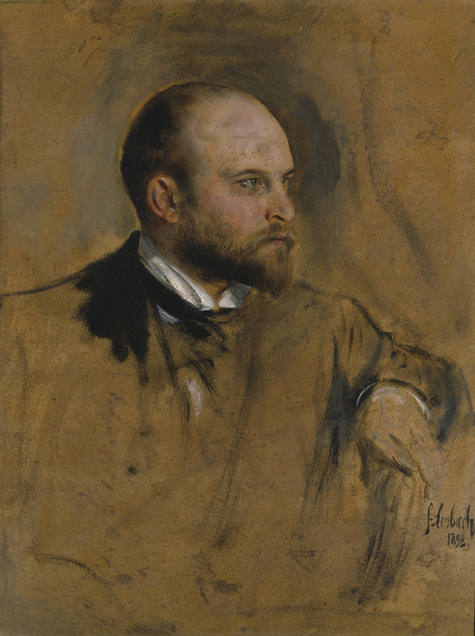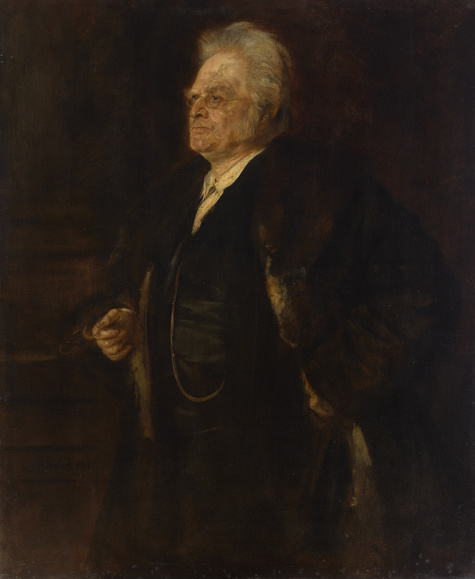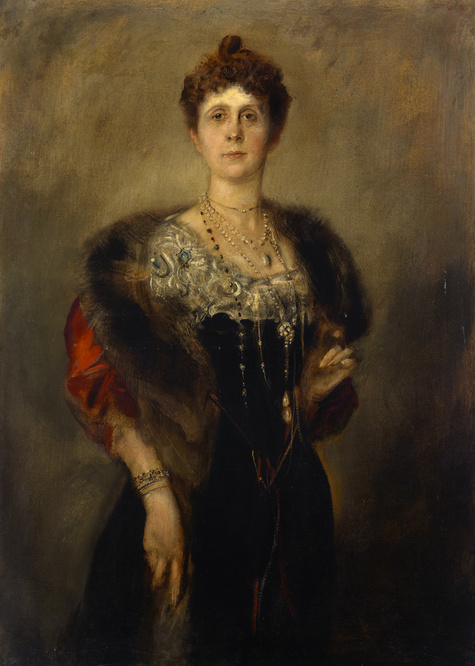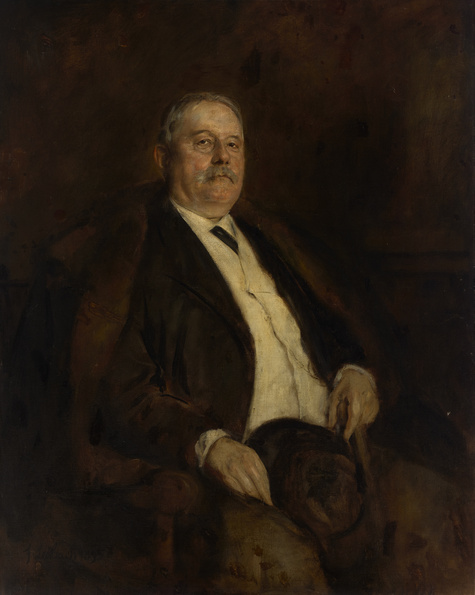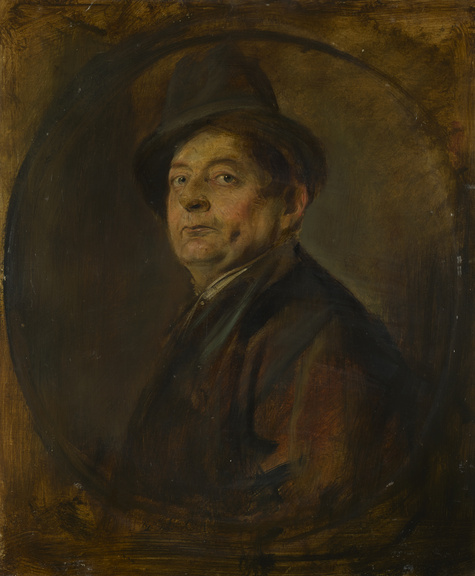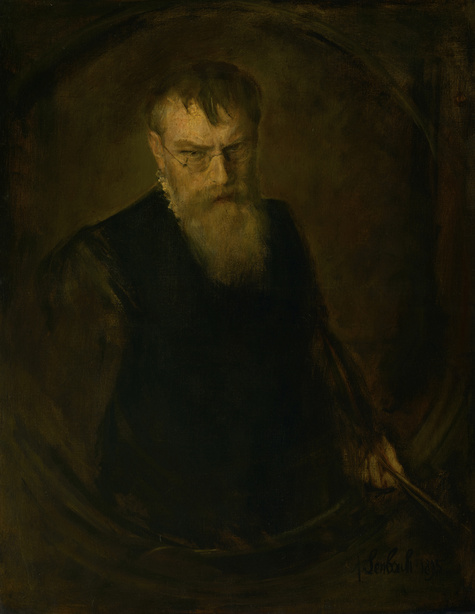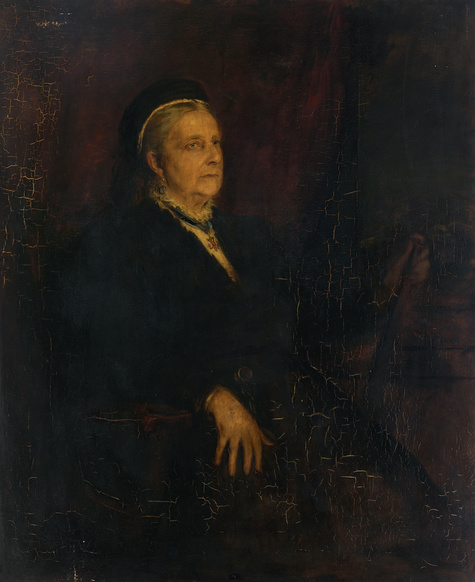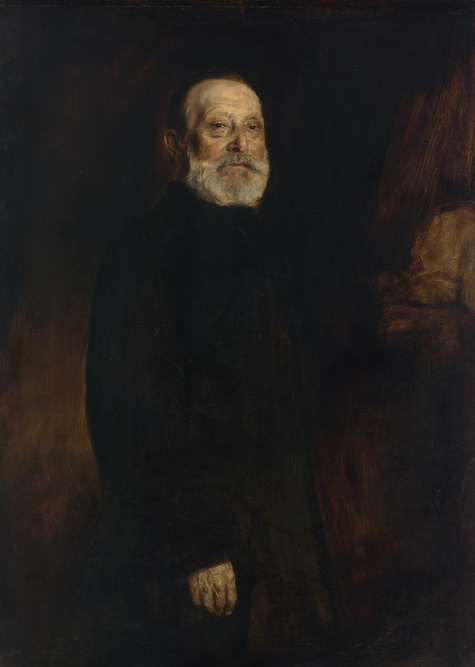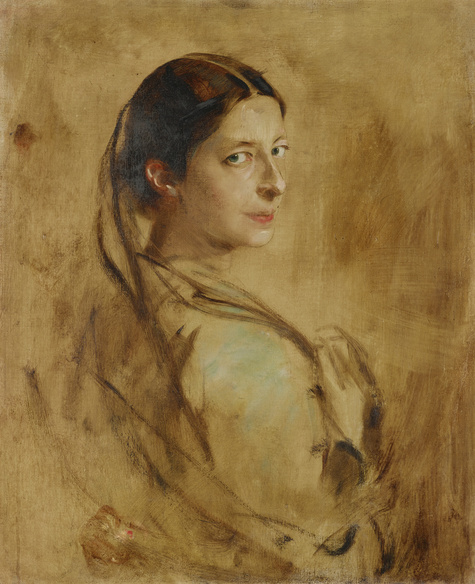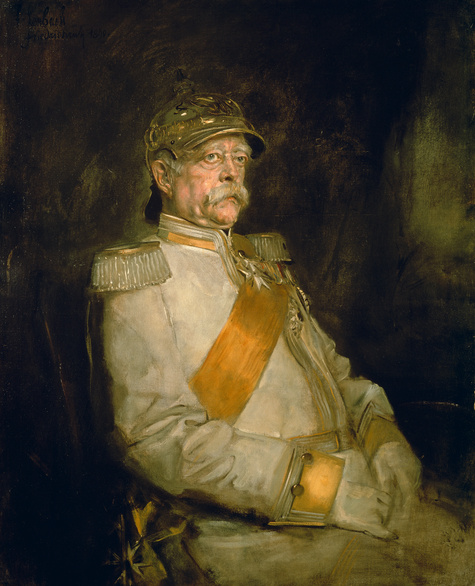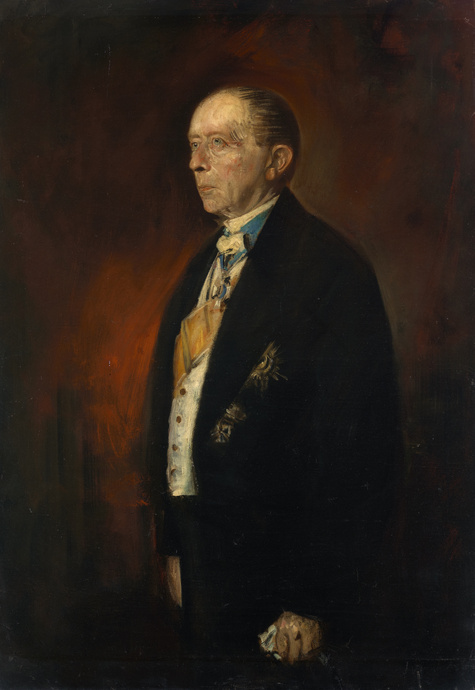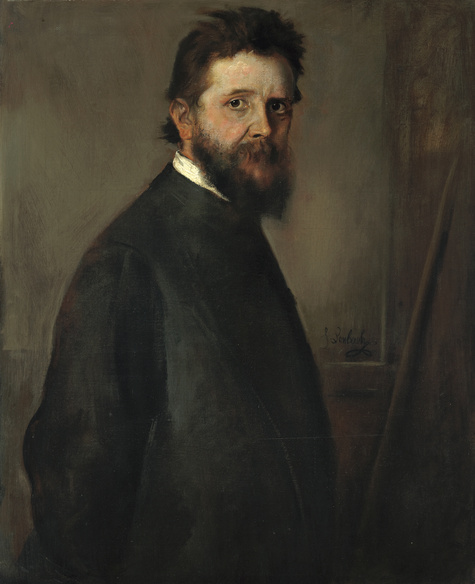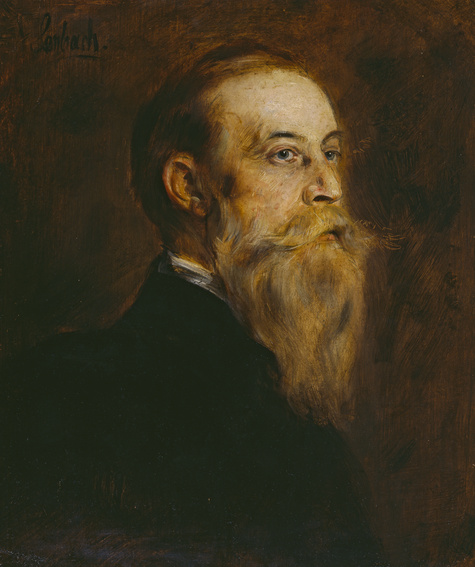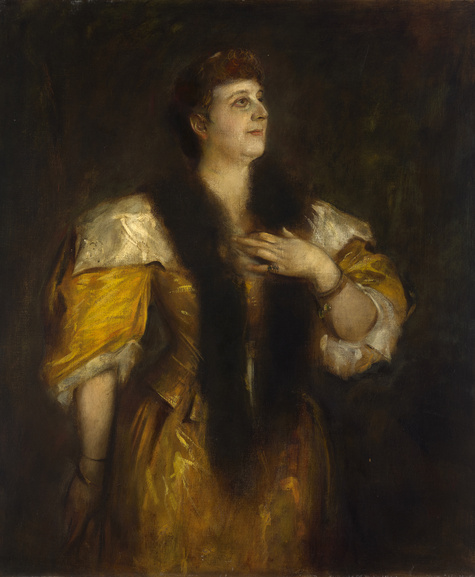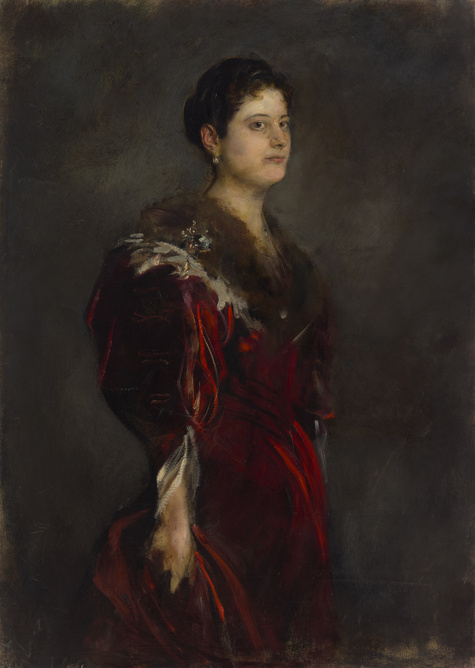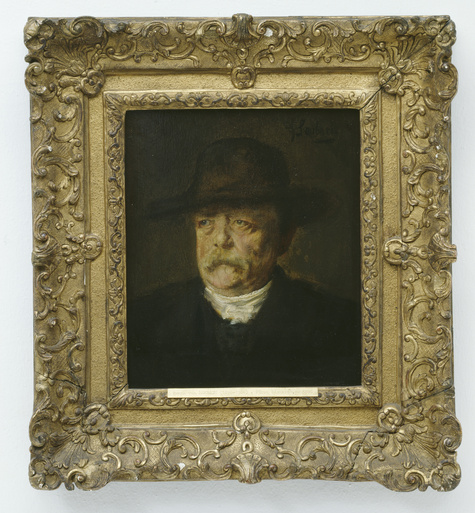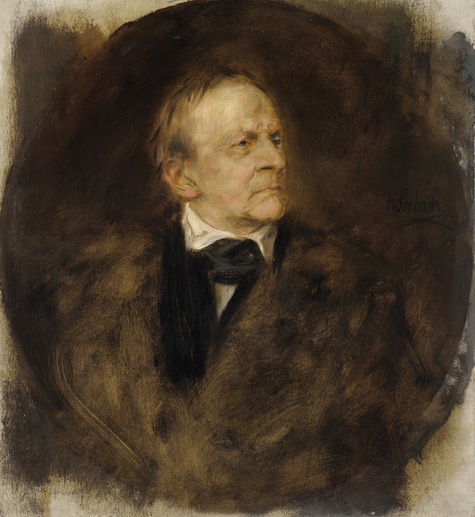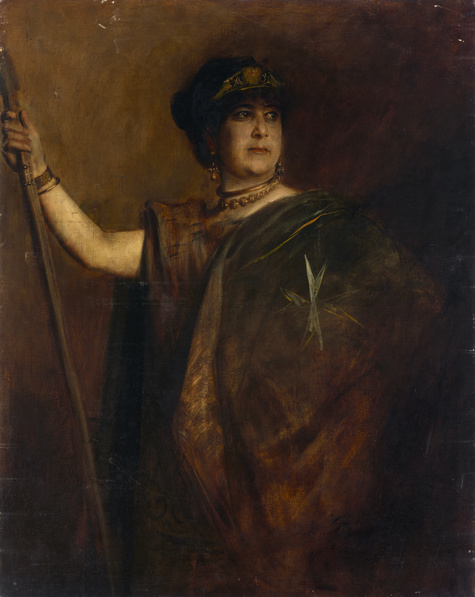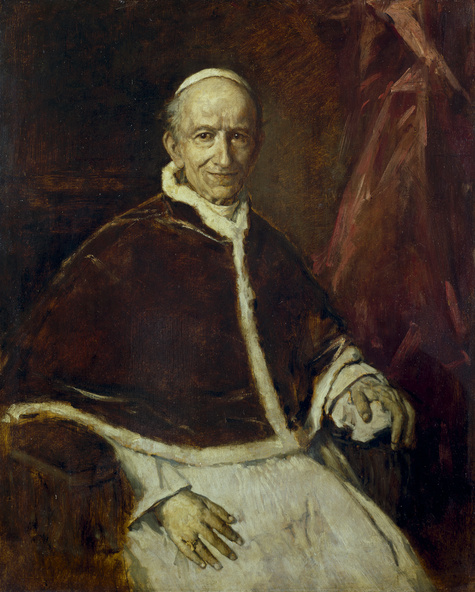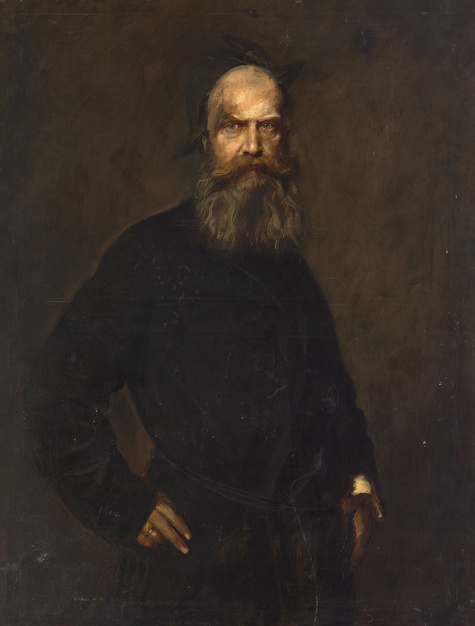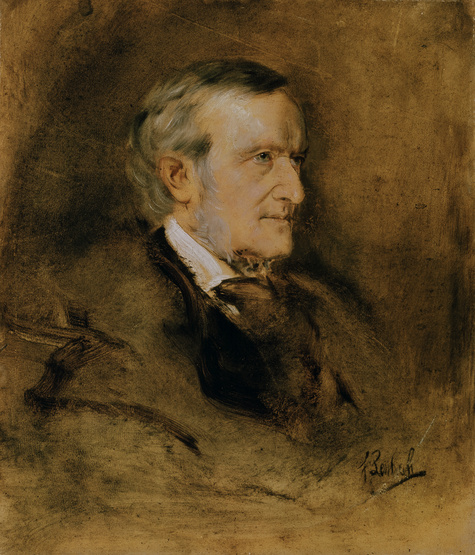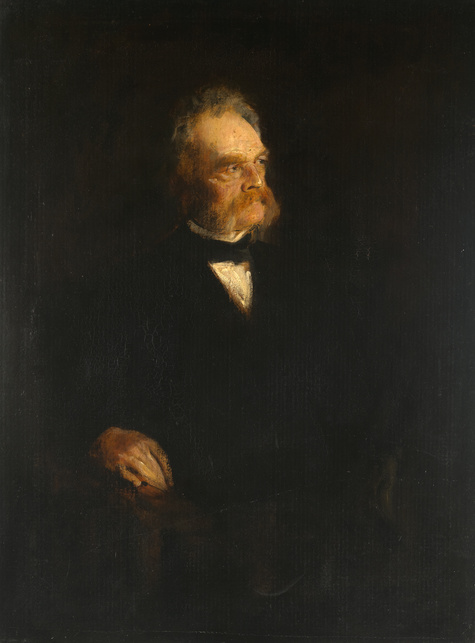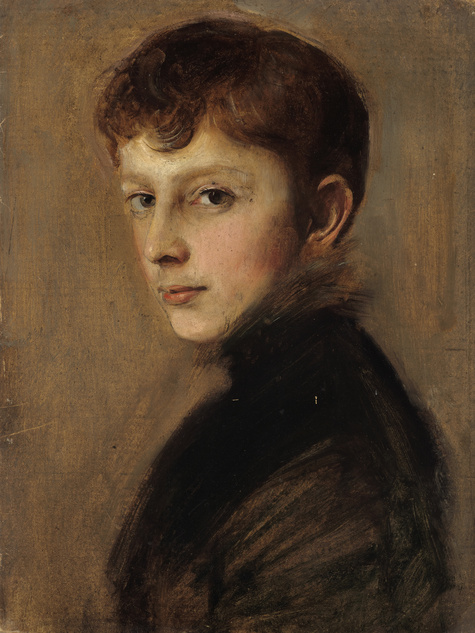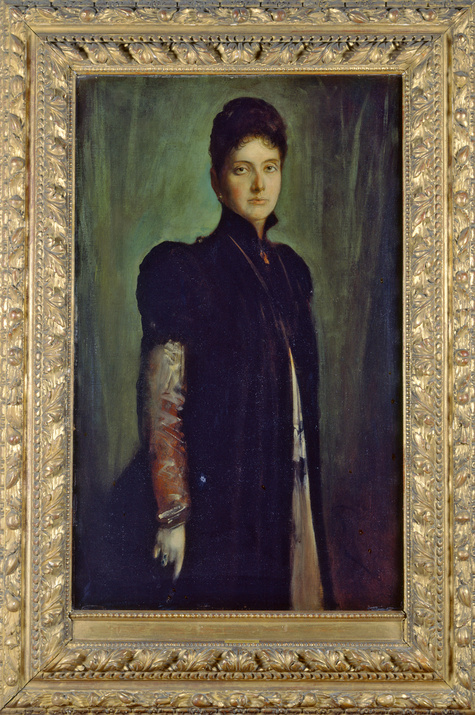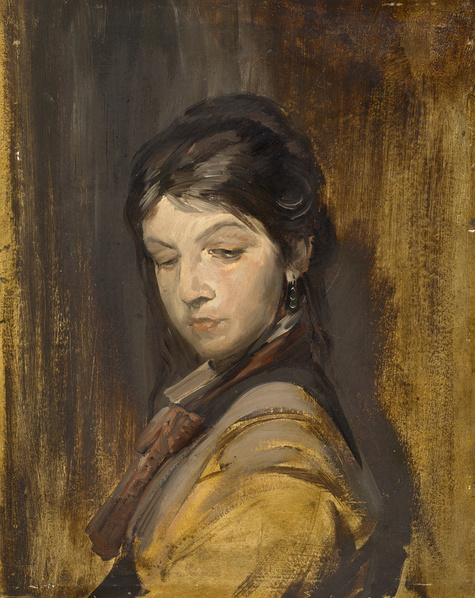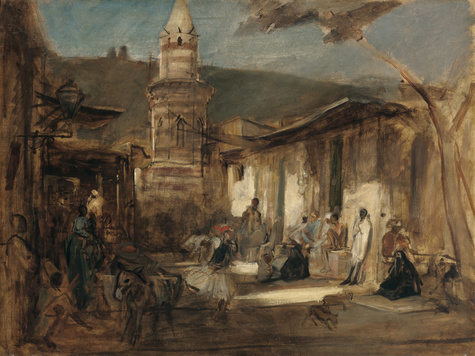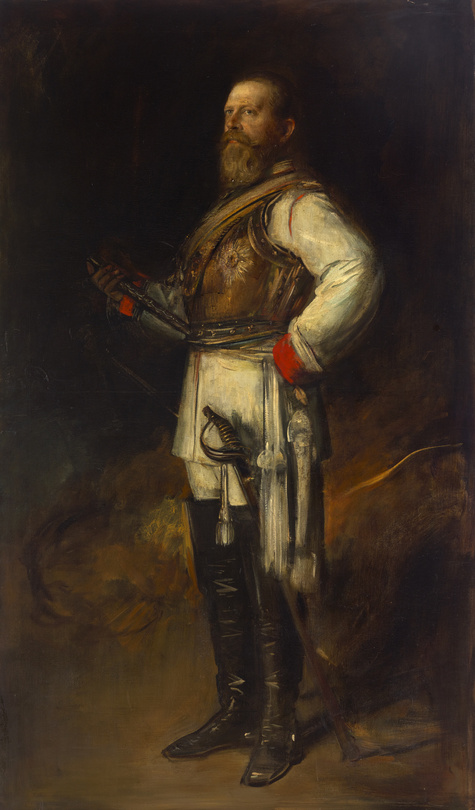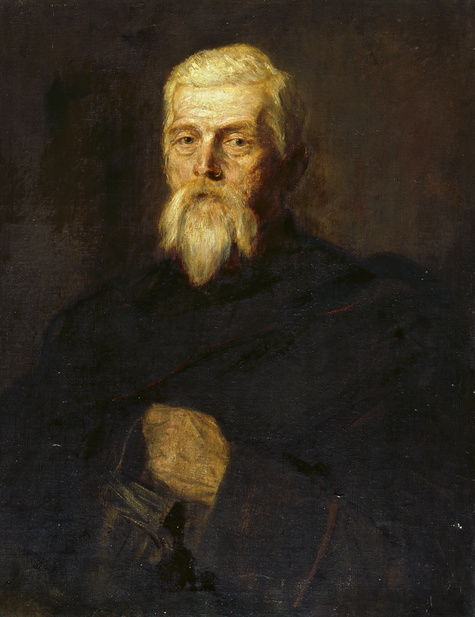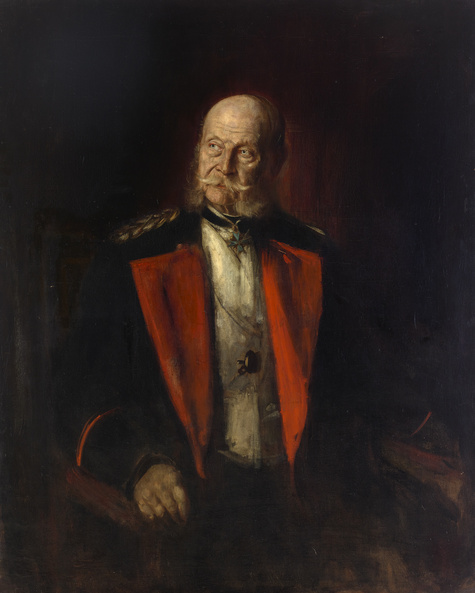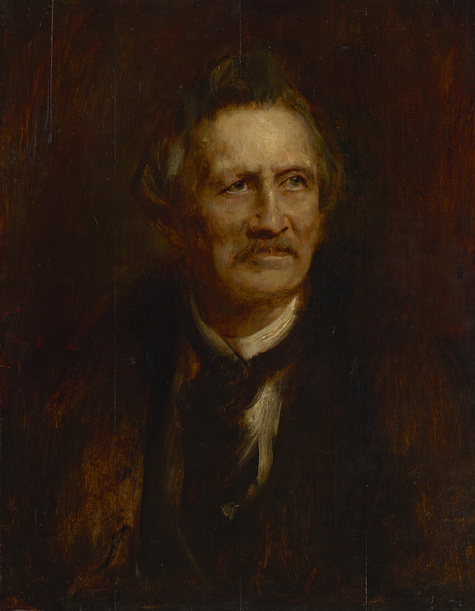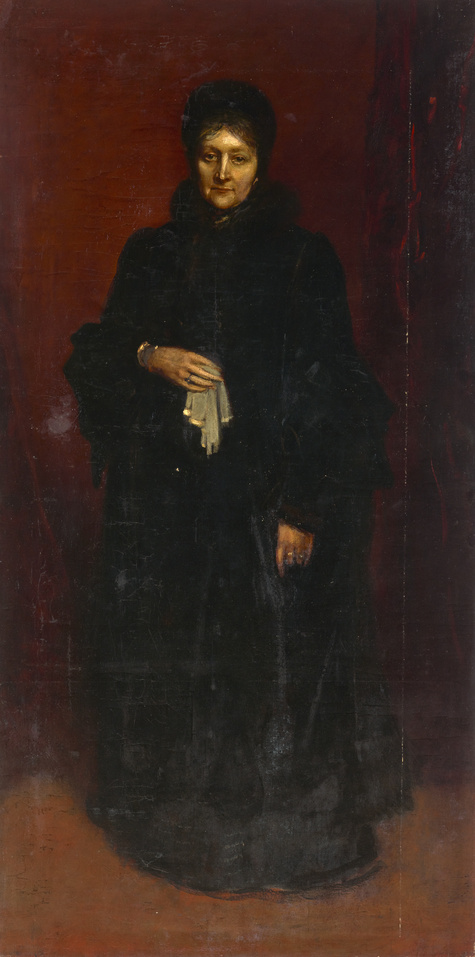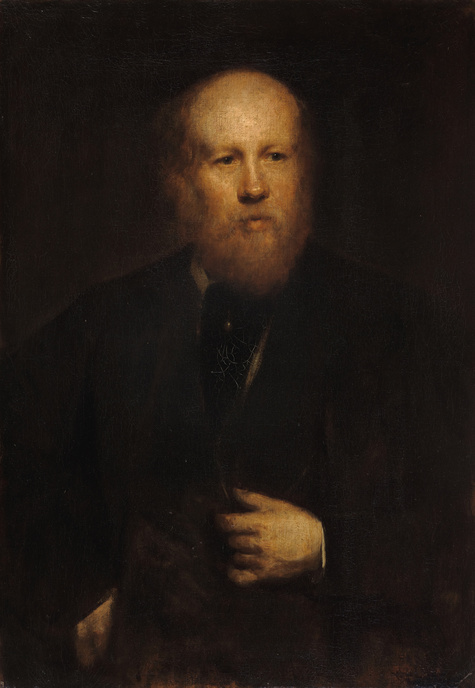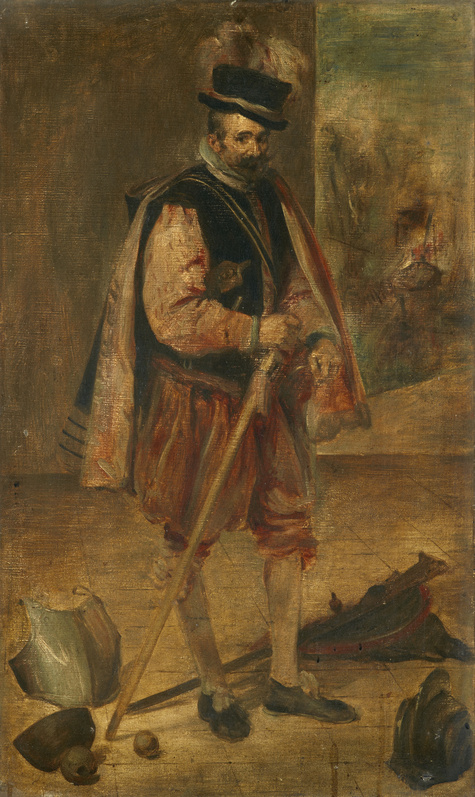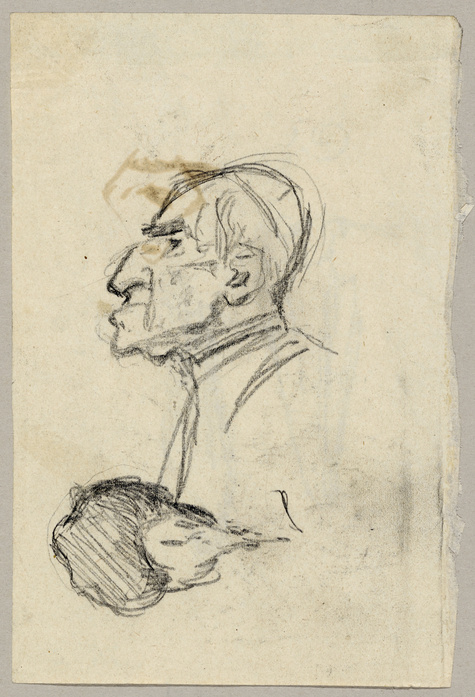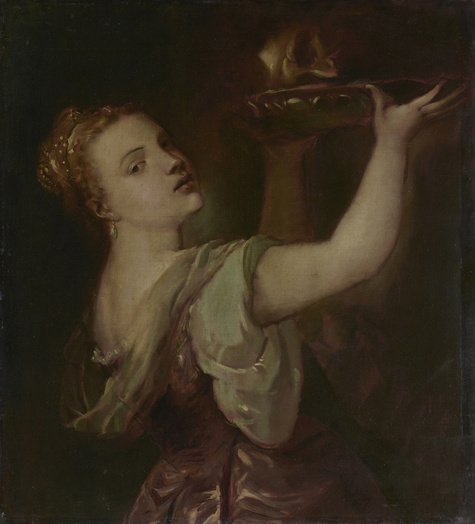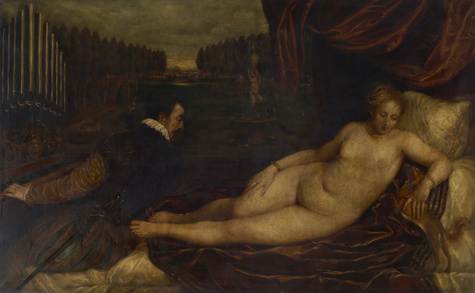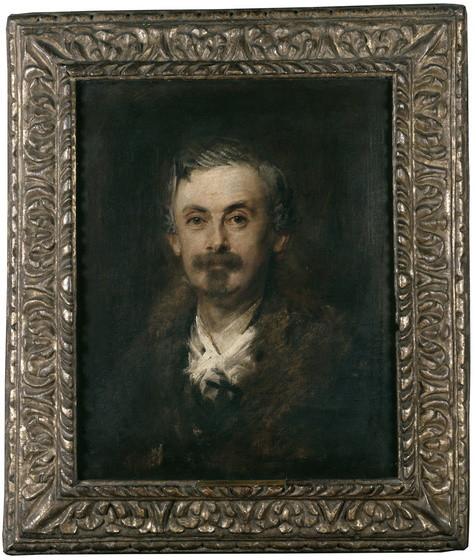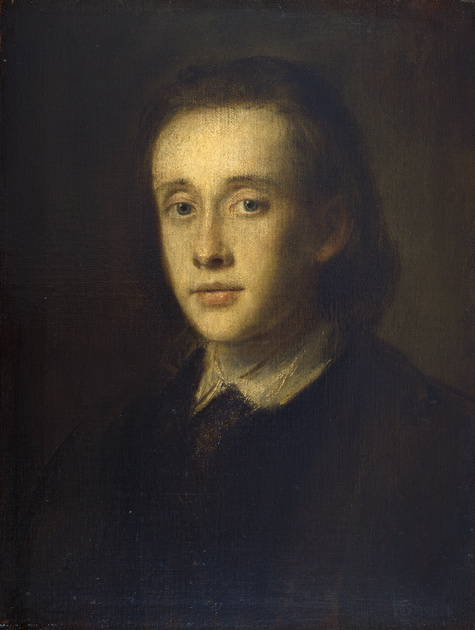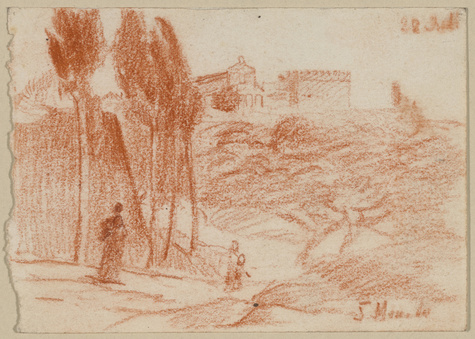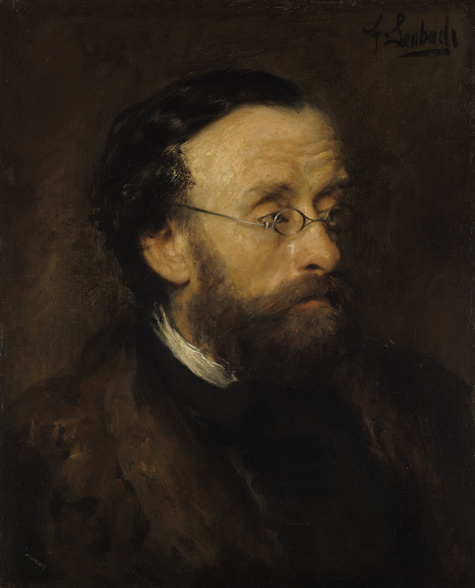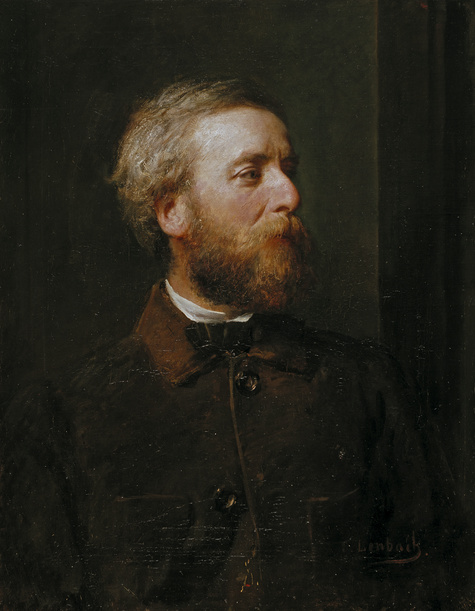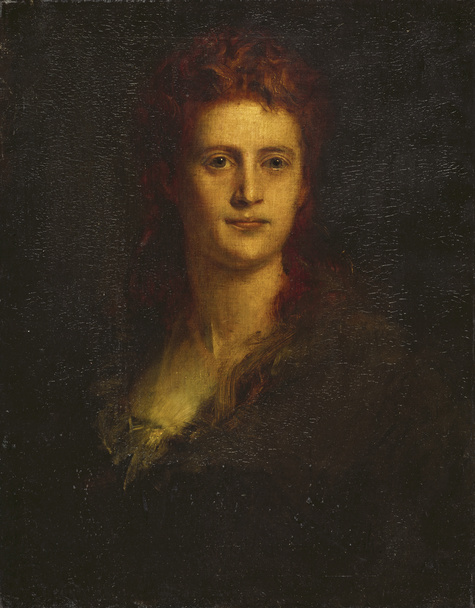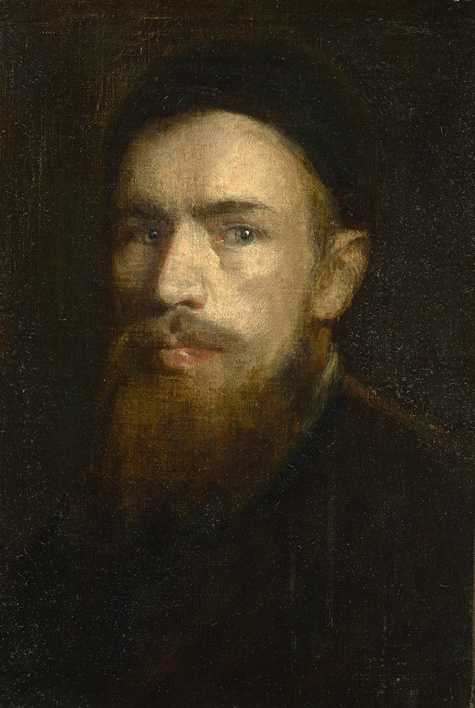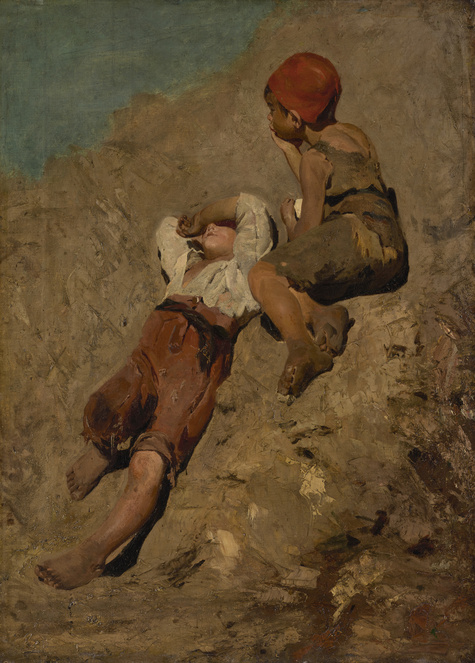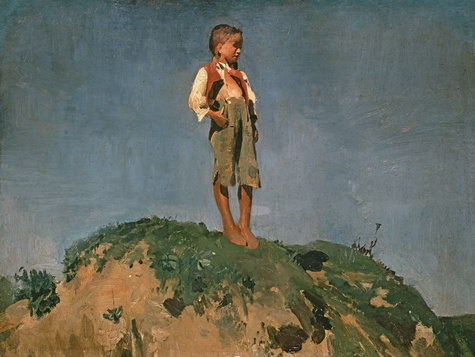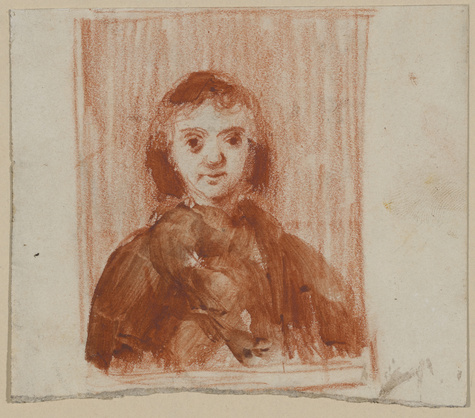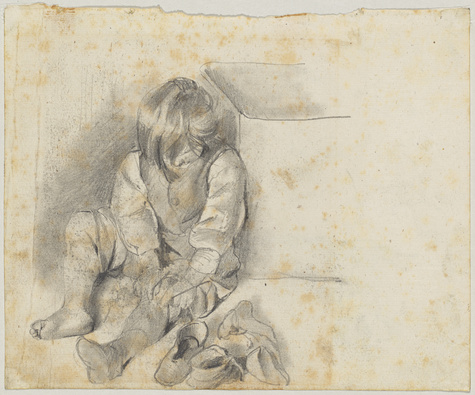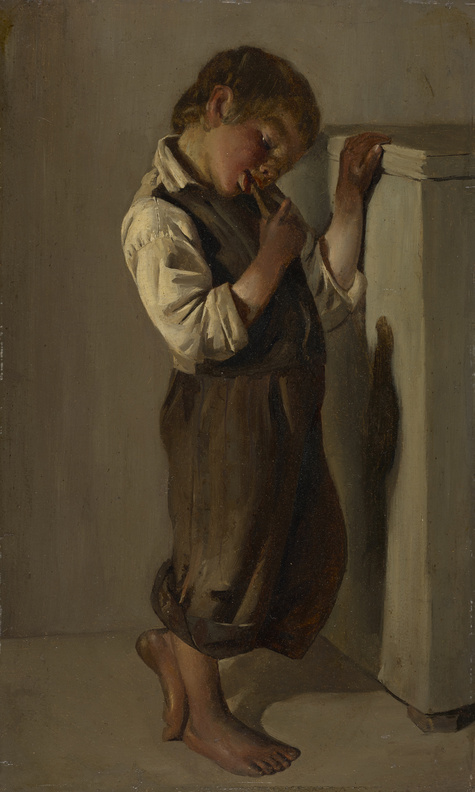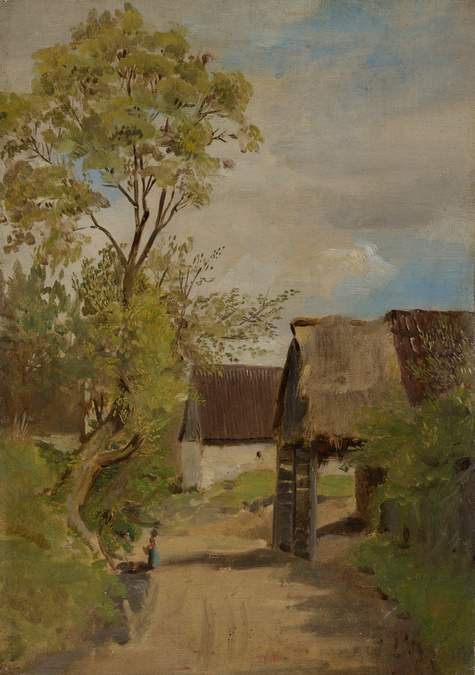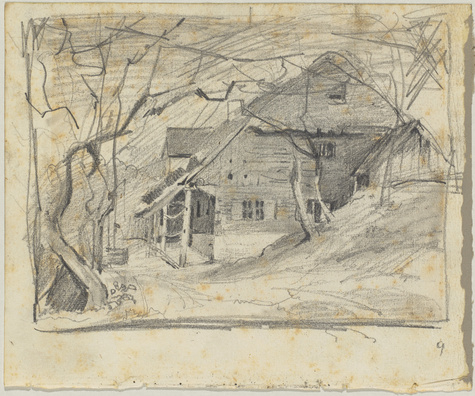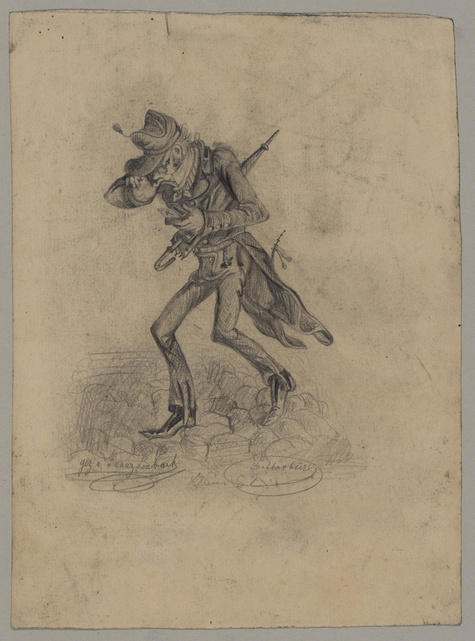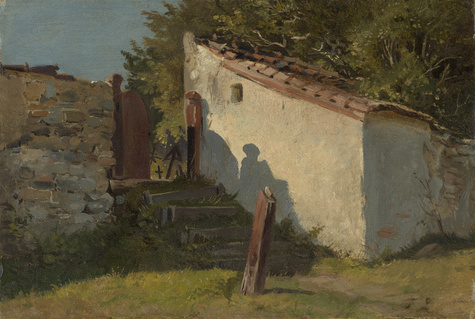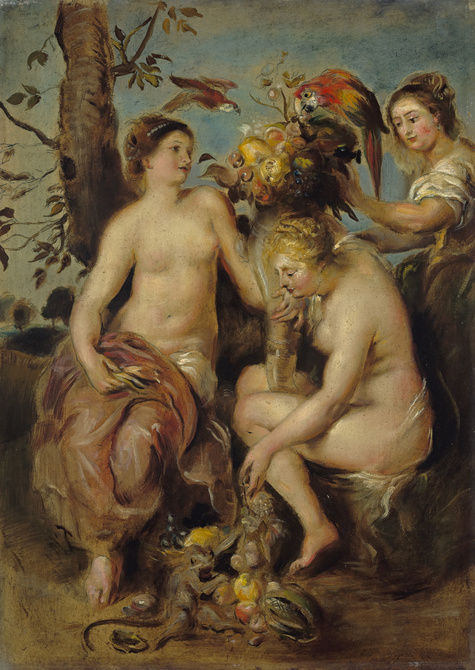Franz von Lenbach
Franz von Lenbach (1836–1904) was a central protagonist in the late-nineteenth-century rise of Munich as an almost mythical center of the arts. Born to a lower-middle-class family, he was trained at the Academy of Fine Arts; after 1870, he became a celebrated portraitist and honed his image as an urbane artist and virtuoso of his craft. As an outward reflection of his great artistic and financial success, he carefully crafted his public persona: next to his private residence, he built a magnificent studio that was open to the public; visitors would find him standing at the easel dressed in an elegant suit. Lenbach was regarded as the leading German portraitist of his era. An unending procession of prominent members of society came to have their portraits painted. His technique was inspired by Old Masters such as Rubens, Titian, and Veronese, but he was not above availing himself of the new medium of photography as well. Painting in his signature style, he created portraits of the pope, of emperors and kings, of elegant ladies and eminent politicians and businessmen. His conception of art defined the public face and image of the high society as well as the rising upper middle classes of the late nineteenth century.
His wedding to Magdalena Countess Moltke and his second marriage to Lolo von Hornstein were important tokens of his social advancement. His family, and especially his daughters Marion and Gabriele, whom he captured in sophisticated portraits that circulated in large numbers of reproductions, became public figures. Lenbach's large circle of friends included the painters Hans Makart and Friedrich August von Kaulbach, Richard Wagner and his wife Cosima, his teacher Carl Theodor von Piloty, the writer and Nobel Prize winner Paul Heyse, and the sculptors Lorenz Gedon and Reinhold Begas. With his carefully groomed lifestyle, Lenbach himself came to epitomize the idea of the prince of painters, a position many of his Munich colleagues likewise aspired to. On the other hand, he took a very critical view of the innovations in art that began to appear toward the turn of the century, and so he also paradigmatically embodied what the artists of the Secession and subsequently the Blue Rider wanted to break free from.
" I intend to build a palace for myself that will eclipse everything the world has seen; it will link the power centers of European high art to the world of the present."
(Franz von Lenbach 1885)
In 1929, the Städtische Galerie im Lenbachhaus was established in the former residence of the artist Franz von Lenbach. When his widow, Lolo von Lenbach, offered to sell the property to the City of Munich in 1924, her proposal included the donation of the building's furnishings and interior decorations as well as numerous works by Lenbach. The acquisition of the Lenbachhaus made it possible to fulfill the desire for a municipal art museum, which had been widely felt for many years. The city's art holdings, which were scattered across various municipal institutions, were united; municipal funding was used to expand the collection. To create enough floor space for the collection and exhibitions, the architect Hans Grässel added an extension to Lenbach’s studio and residence building, creating a three-wing complex. On May 1, 1929, the Städtische Galerie im Lenbachhaus opened its doors to the public.
Audioguide about works by Franz von Lenbach
Only if you agree, you allow us to load data from Soundcloud.
Selected works by Franz von Lenbach
